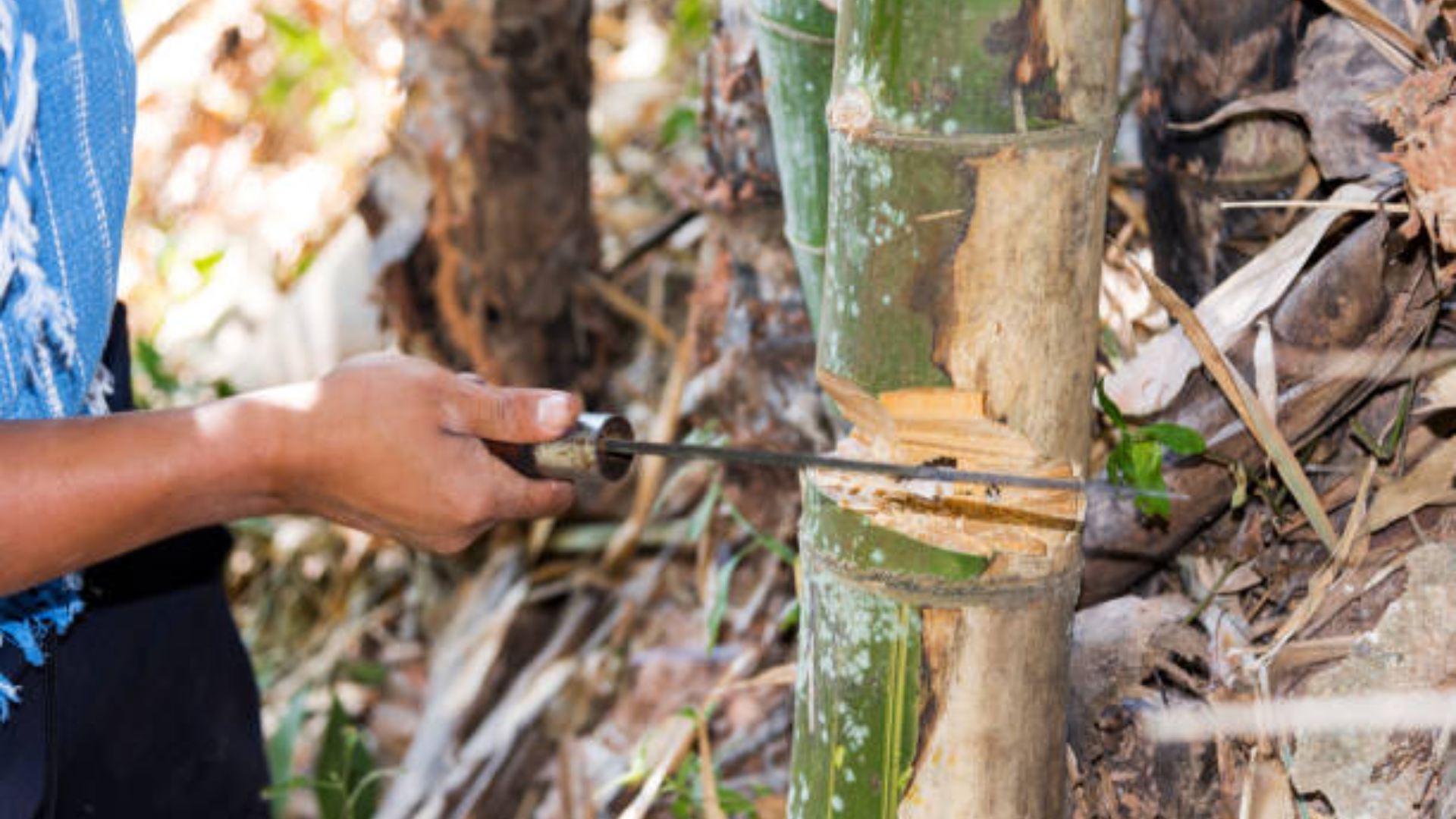I’ve always loved working with natural materials, and bamboo is one of my favorites. It’s strong, lightweight, and looks great in all kinds of projects – from garden stakes to home decor.
The first time I tried cutting bamboo, I wasn’t sure where to start. It seemed simple, but I soon discovered that using the right tools and techniques makes a significant difference.
If you cut it the wrong way, bamboo can split or crack, which ruins your piece. In this blog, I’ll walk you through my step-by-step guide to cutting bamboo the right way.
No matter if you’re working on a DIY craft, building a fence, or just trimming some stalks in your garden, I’ll show you what tools to use, how to make clean cuts, and some tips to get the best results. It’s easy once you know how.
Why Cut Bamboo?

Bamboo is renowned for its rapid growth and versatility, making it a popular choice for gardeners and landscapers. However, without proper maintenance, it can become invasive and problematic.
Regularly cutting or pruning bamboo offers several benefits that promote the health of the plant and the aesthetics of your garden.
Promotes Healthy Growth
Pruning bamboo encourages the development of new shoots and stronger culms (stalks).By removing older, dead, or weak culms, you allow the plant to focus its energy on producing robust new growth.
This practice also enhances air circulation and light penetration within the bamboo clump, thereby reducing the risk of pests and diseases.
Controls Spread
Certain bamboo species, especially those of the running type, can spread aggressively through underground rhizomes.
Regular cutting helps control this spread, preventing bamboo from encroaching on other areas of your garden or neighboring properties.
Enhances Aesthetic Appeal
Well-maintained bamboo adds a striking visual element to gardens.Pruning helps maintain a tidy appearance by removing unsightly or overcrowded culms.
Thinning out the lower foliage can also highlight the attractive canes, adding to the plant’s ornamental value.
Provides Sustainable Material
Mature bamboo culms, typically around three years old, are ideal for harvesting and can be utilized in various applications, including construction, crafts, and furniture making.
Harvesting these culms not only provides sustainable materials but also stimulates the plant to produce new growth.
Supports Environmental Management
Regular pruning and harvesting of bamboo contribute to environmental sustainability.Bamboo’s rapid growth and ability to regenerate quickly after cutting make it an excellent resource for carbon sequestration and erosion control.
Proper management ensures that bamboo remains a beneficial component of the ecosystem.
Incorporating regular bamboo cutting into your garden maintenance routine promotes plant health, controls spread, and provides sustainable materials, all while enhancing the beauty of your outdoor space.
Tools and Materials
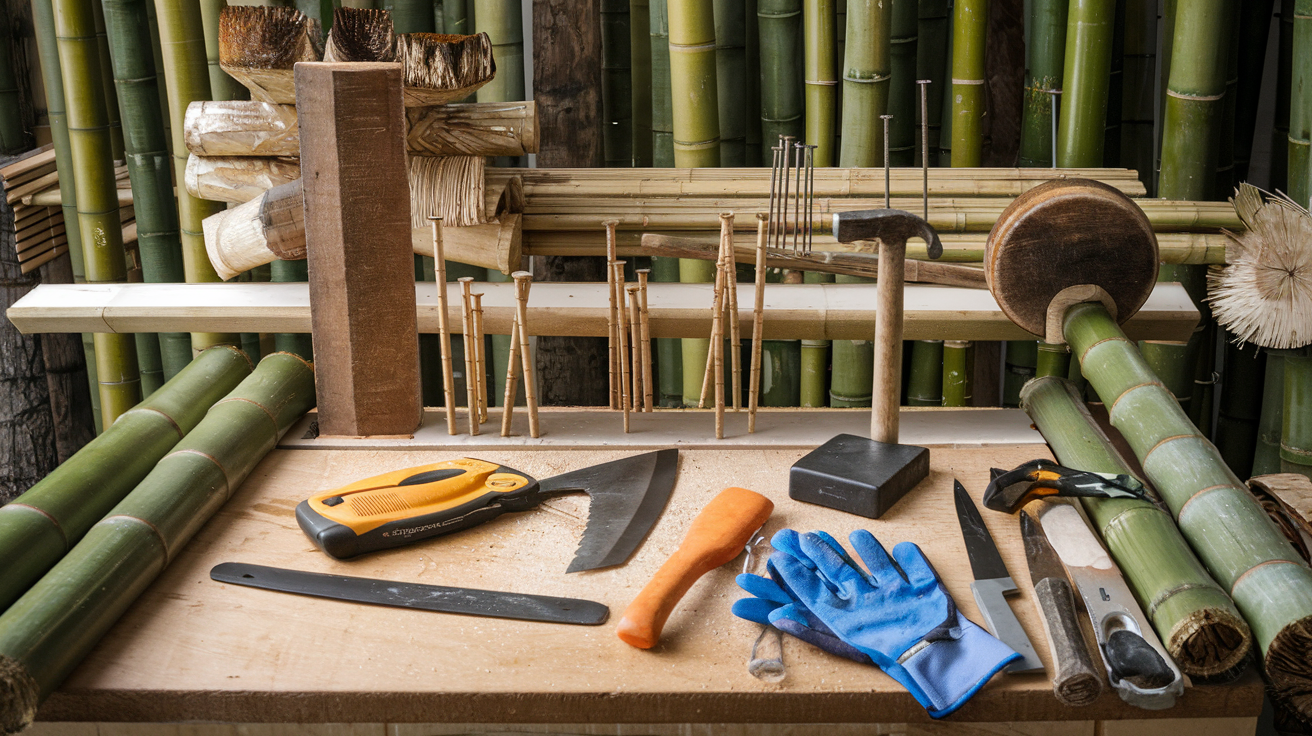
- Sharp Machete: Bamboo for Cutting and Partition
- Hand saw: For accurate, clean cuts (especially near the base)
- Knife or blade: To trim sharp edges
- Gloves: To protect hands from the sharp edges of bamboo
- Safety Glasses: To prevent injury from snapping rods or splinters
- Club or Malet: To help run a match through thick bamboo
- Hard Support Post/Pillar: To divide the Bamboo by hand
- Nails and hammer: To fix bamboo stakes
- Material: Mature bamboo pillars (preferably older) Clean workplace, Water or cloth for cleaning equipment
Step-by-Step Guide on How to Cut Bamboo
If you’re working on a garden project, crafting, or building something from scratch, it’s better to know how to cut bamboo safely and effectively.
Step 1: Choose the Right Bamboo
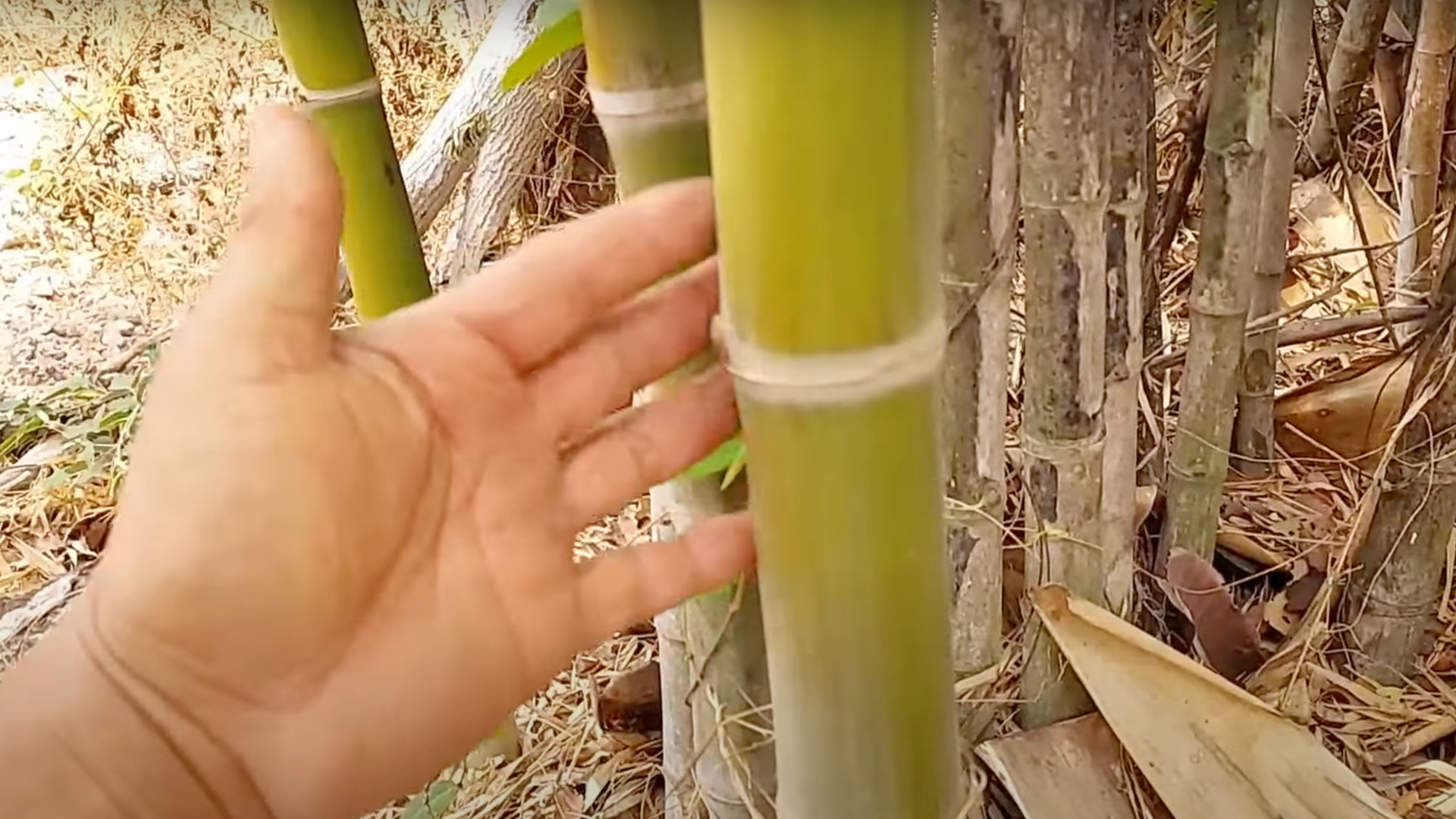
Select bamboo that is more than two years old. Old bamboo has a dull, dark color and is strong and more durable. Avoid fresh, green bamboo as it is very soft and easily attracts insects.
Older bamboo is also less likely to crack or bend as it dries. For the best results, try to harvest during the dry season when moisture levels are lower.
Step 2: Cut at the Right Time
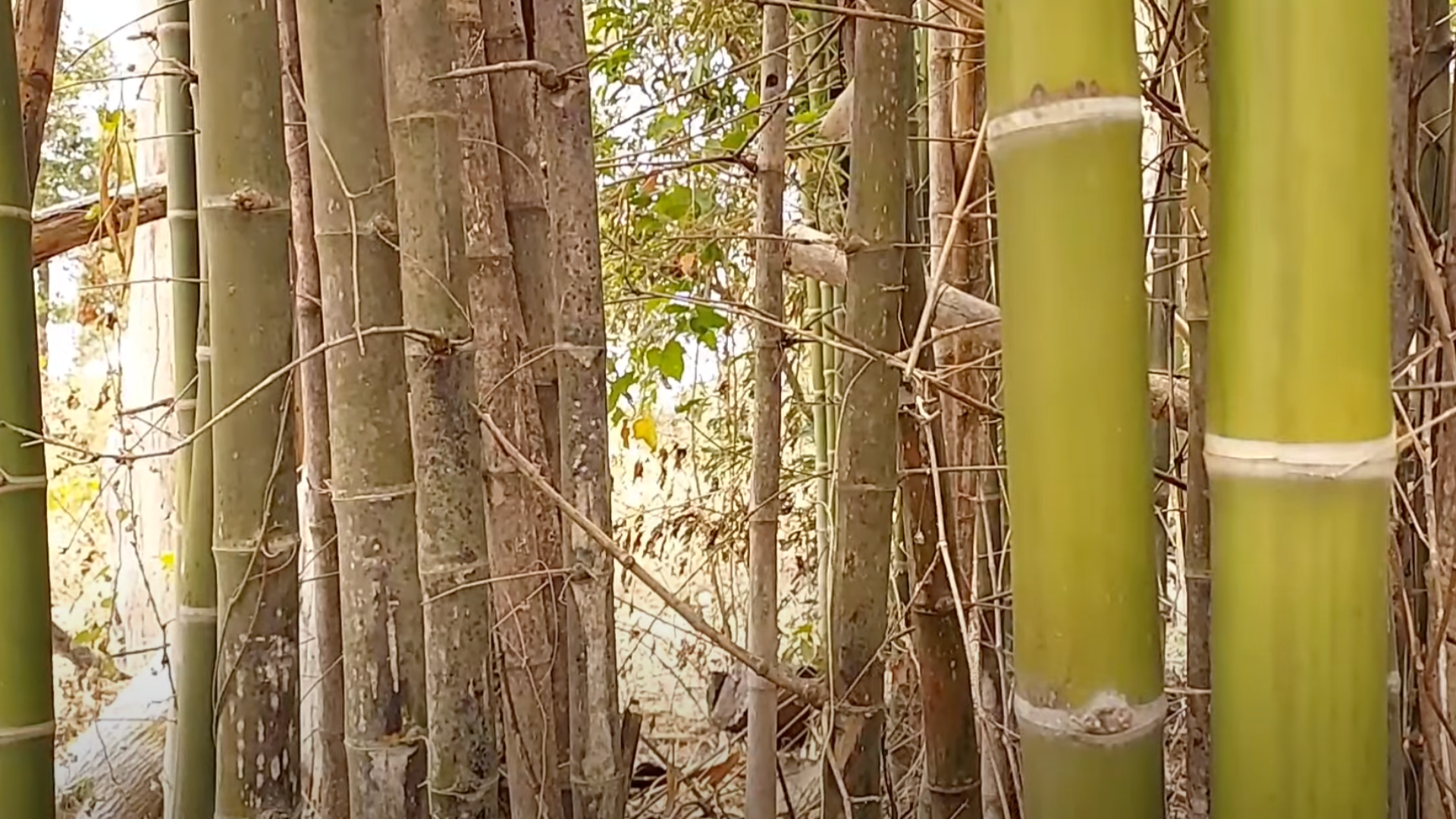
The best season to cut bamboo is the end of the dry season or the beginning of the rainy season. Bamboo division is less likely and lasts longer when cut at the right time of the year.
Cutting during this period reduces moisture content, making the bamboo stronger and more resistant to pests. Timing really does make a big difference in durability.
Step 3: Be Aware of Safety Dangers
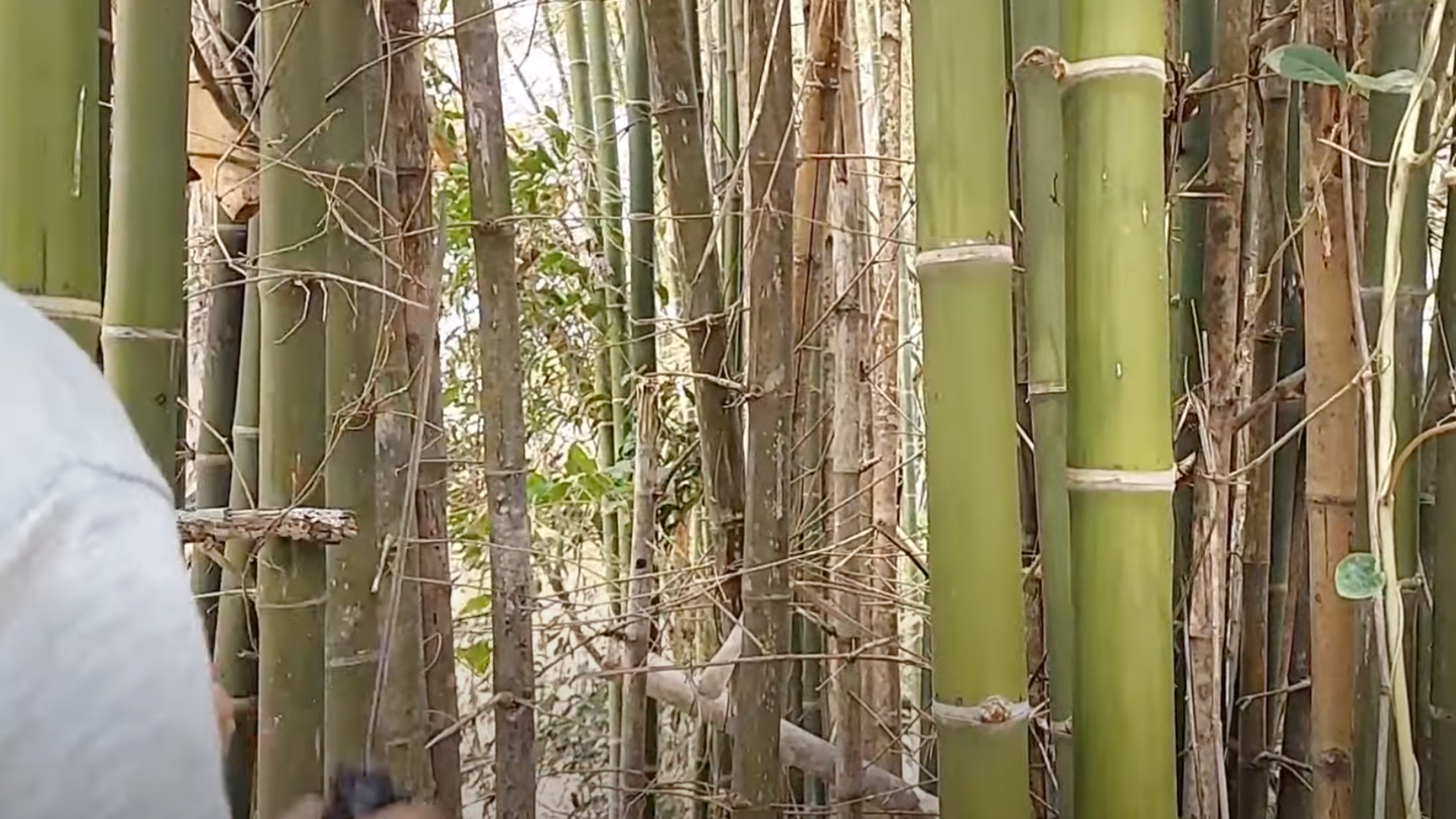
Always hold the bamboo at the end while cutting. Thin branches can snap back and hit your face or eyes. Many injuries happen this way, so take your time and stay alert.
If possible, wear safety gear like goggles and gloves to protect yourself while working.
Step 4: Start Cutting on the Bend Side

Start by making a small cut toward the bamboo. This helps control the fall and prevents the bamboo from splitting or cracking.
Then, cut the opposite side to bring it down safely and in a controlled direction. Take your time and keep a firm grip while cutting.
Step 5: Remove the Branches Carefully
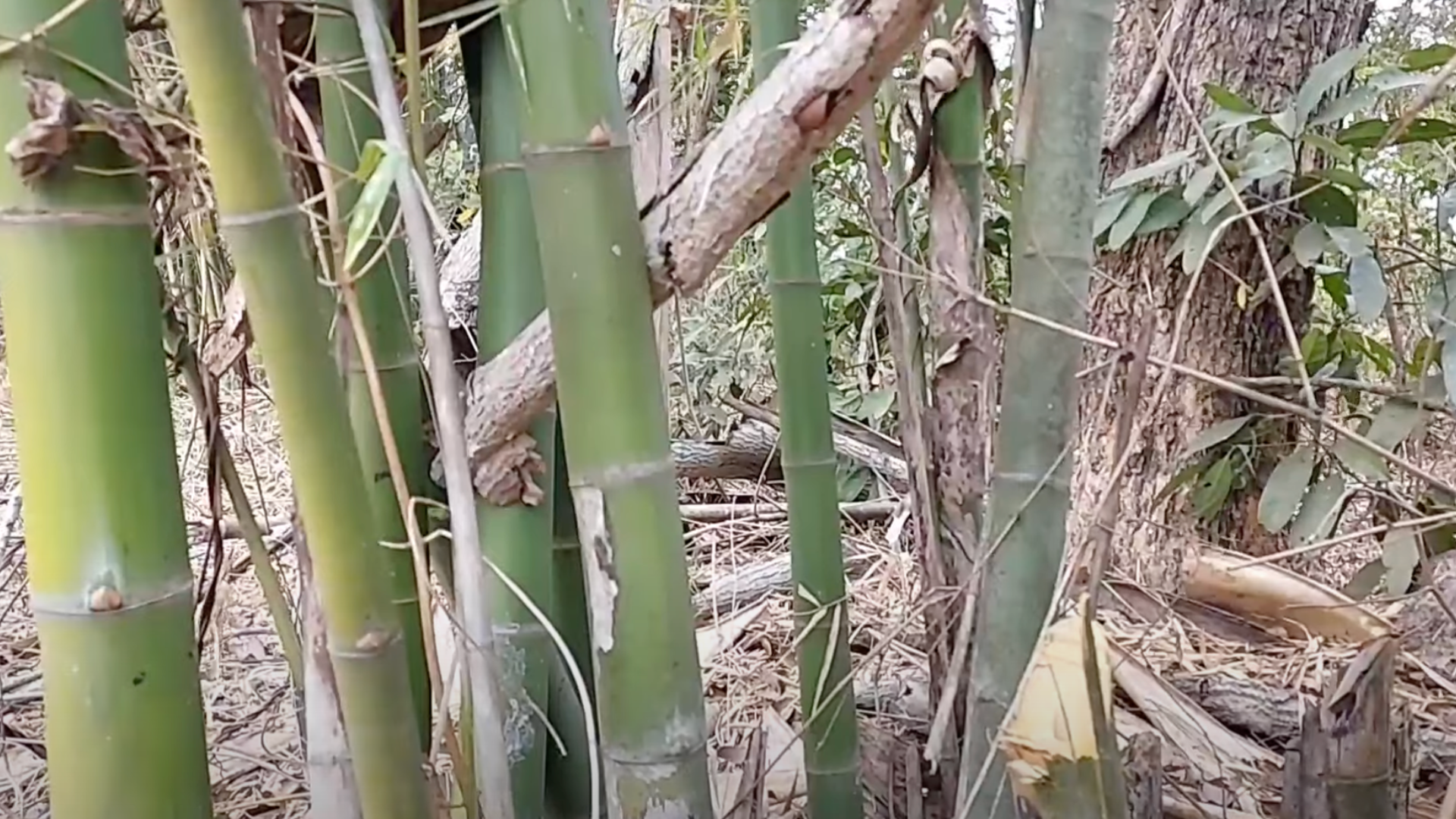
Use a sharp machete to cut any side branches. Slice under each branch first, then tap backward to clean it off.
This method prevents the bamboo from splitting and helps protect your machete from getting stuck or damaged. It also gives you a smoother finish with less effort.
Step 6: Divide the Bamboo
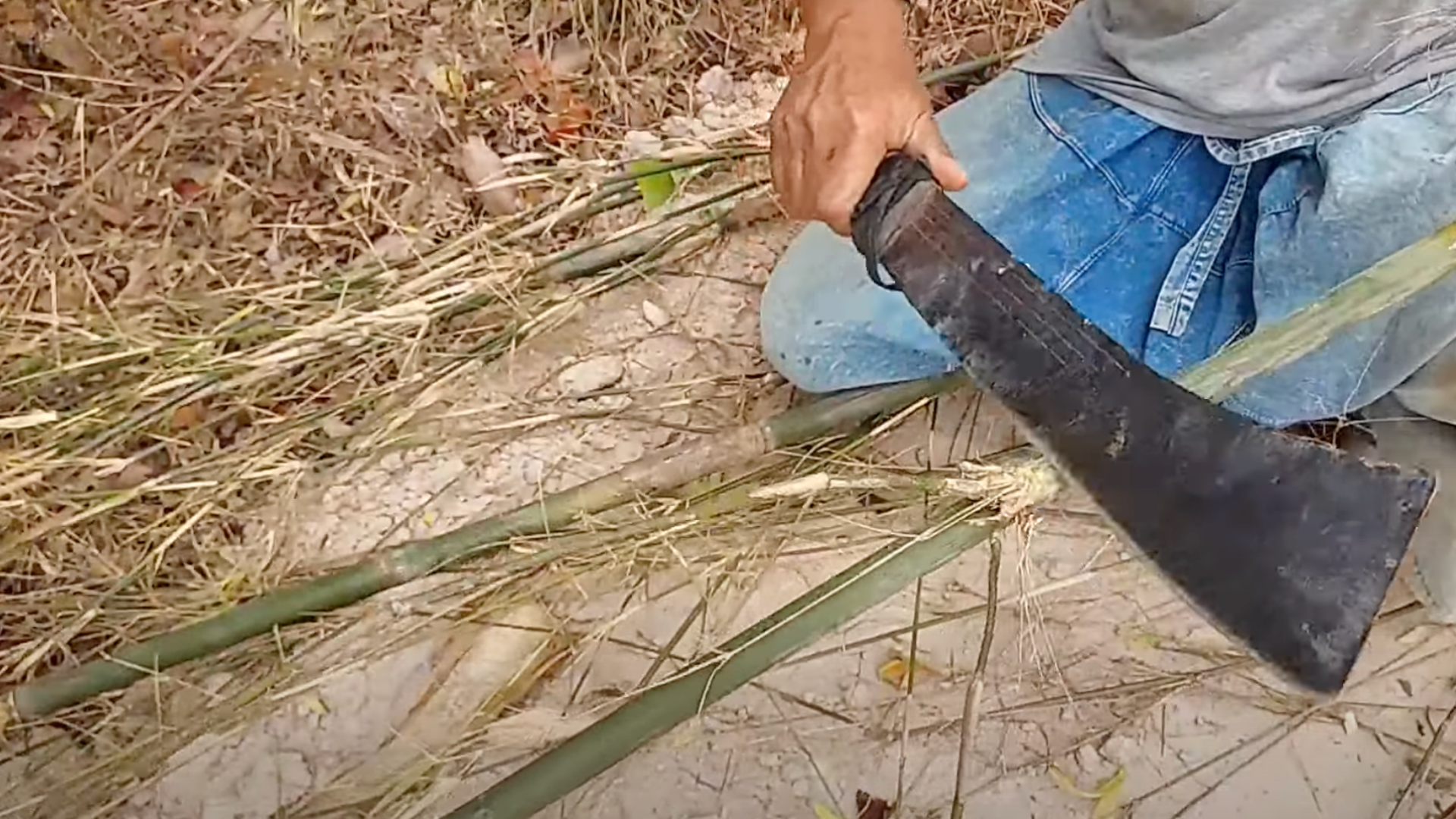
Cut a small notch on the bottom of the bamboo and separate it by hand. Step on one end to hold it steady, then pull upward to divide the other end evenly.
Always split the strips into even parts to keep them strong and flexible. This method gives you better control and helps prevent cracking.
Step 7: Trim the Sharp Edges

Bamboo edges are very sharp and can easily cut your hands. Always use a knife to shave down or smooth the sharp parts before handling.
You can also apply a little oil to reduce friction while working. Taking this step helps prevent injuries and makes the bamboo easier to manage.
Step 8: Size and Cut for Use
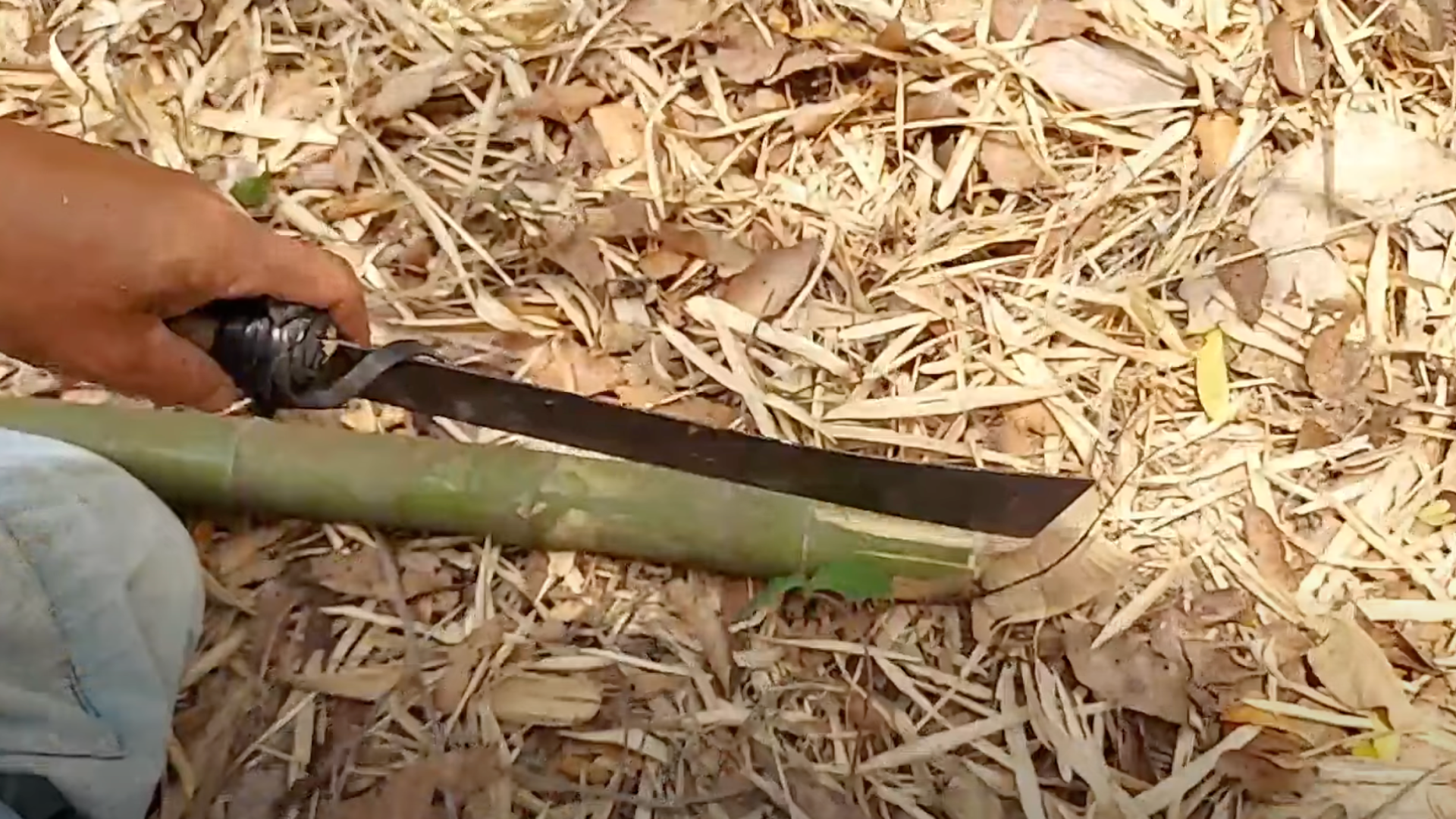
To cut the bamboo into small pieces, make three clean cuts around the pole, turning it a little bit each time. Then you can give it a shape in bits, strips, or any shape that you need for your project.
For a more detailed look at each step, check out this awesome video by @JonJandaiLifeisEasy – it’s the perfect guide to help you master the bamboo cutting and planting process!
Bonus: How to Propagate Bamboo from Cuttings
Want more bamboo without buying new plants? You can grow bamboo from cuttings. It’s easier than you might think, and a great way to expand your garden.
Culm Cuttings: Start by choosing strong, healthy culms (the bamboo stalks). Look for mature individuals, neither too young nor too old. Then, make a clean cut just above a node (the joint in the stem). That’s where new growth can begin.
Planting: Take your cutting and plant it in well-draining soil. Don’t bury it too deep, just enough to hold it upright. Please place it in a location with indirect sunlight and keep the soil moist, but not overly wet.
Tip to Avoid Rot: Let the ends of your cuttings dry, and call us about 1–2 weeks before planting. This step really helps prevent rot and gives your cutting a better shot at growing.
Give it a little time and care, and you might be surprised at how well it takes off.
Types Of Bamboo
Bamboo is not just a plant; it is a full range of different types. Once I get into it, I see how many types there are, and each has its own look, use, and color. I think you will find it interesting, especially if you’re considering growing bamboo at home. I feel you will walk with three types.
1. Black Bamboo

It stands out, and its stalks are dark, almost black. They are not painted, but they show how it grows. It spreads rapidly, although really rapidly.
Therefore, if you plant this plant in your yard, be sure to plan accordingly. Use obstacles, or it will take more space than you want.
2. Golden Bamboo

This type of plant surprised me. Sometimes, they grow yellow stalks, and occasionally, green ones. It is also called Fishopol Bamboo or Fairyland Bamboo.
The more it looks, the stronger it grows, which is very good for privacy.
3. Lucky Bamboo
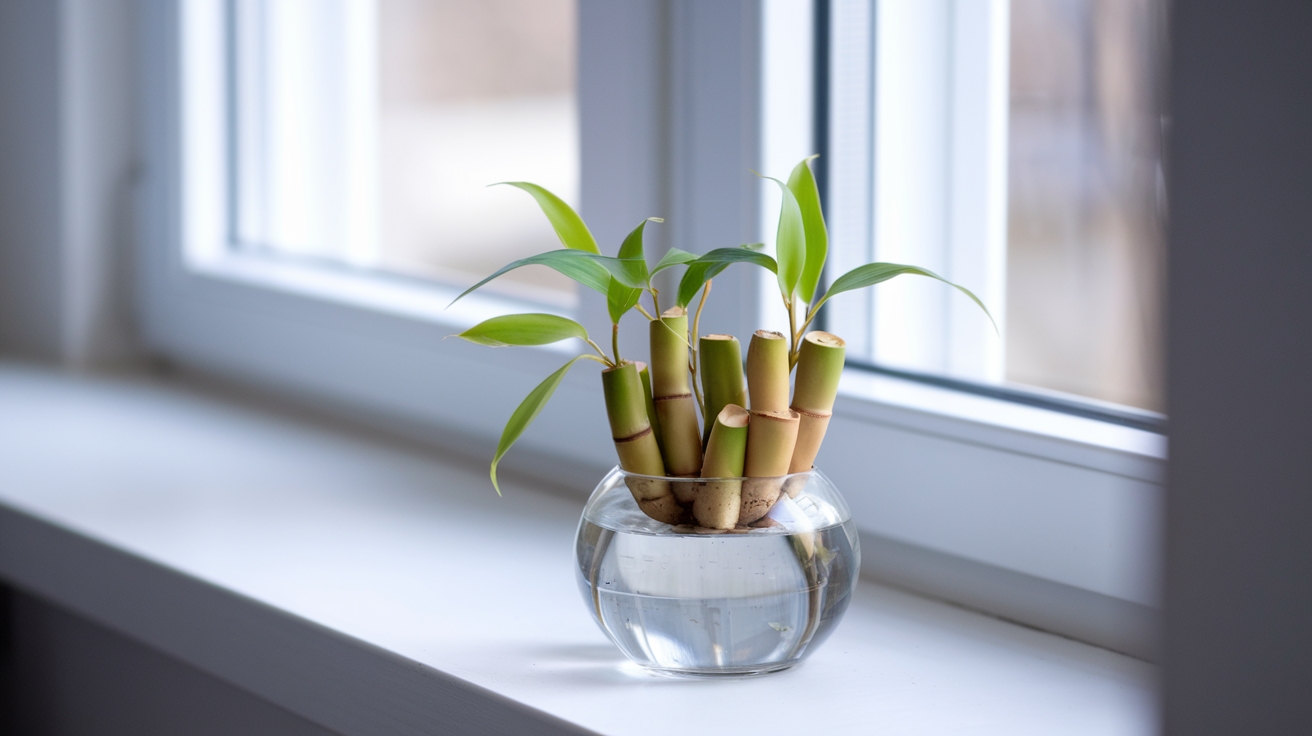
It is not really a bamboo plant. Lucky bamboo is more like a houseplant. It is small, streamlined, and usually lives in a vase on a window. If you want a no-yard type bamboo look, it is a smart option.
Everyone has their place, and it just depends on what you need: privacy, design, or something easy to keep indoors.
Now that you know the difference, you can choose the person who best suits your location and style.
Final Tips & Troubleshooting
Cutting bamboo is straightforward, but like anything, it’s easy to make a few missteps. Here are some final tips to help you avoid common mistakes and ensure your bamboo grows strong and healthy.
- Avoid common mistakes: Don’t cut too close to the node. Cutting right above a node is key for new growth. If you cut too close, it can block the bamboo from sprouting new shoots properly.
- Dull tools are your enemy: Using a dull machete or saw can cause bamboo to splinter, resulting in rough edges and a more challenging job. Keep your tools sharp to ensure smooth cuts and prevent damage to the bamboo.
Maintenance Tips
- Prune regularly: Bamboo can grow quickly and, if left unchecked, get wild. Trim it back as needed to keep it in shape and prevent it from overtaking your garden or space.
- Watch for pests and diseases: Bamboo can be prone to certain bugs and illnesses. Keep an eye out, and if you notice anything unusual, address it right away. Healthy bamboo is happy bamboo.
With these tips, you’ll be able to cut and maintain bamboo with ease and enjoy its beauty and flexible for years to come.
Conclusion
Cutting bamboo might seem straightforward, but it requires consideration, proper technique, and respect for the plant and its environment.
By following these steps and tips, you’ll maintain a healthy, vibrant bamboo population in your garden that continues to awe and inspire.
If you’re a seasonal gardener or a new greener, these steps will help you cultivate a bamboo that thrives year after year.
Remember, like any garden task, cutting bamboo is part art and part science.
With these tips, you’re well-equipped to approach this task with confidence and care, ensuring your bamboo stands tall and continues to enchant for many seasons to come. Happy gardening!

